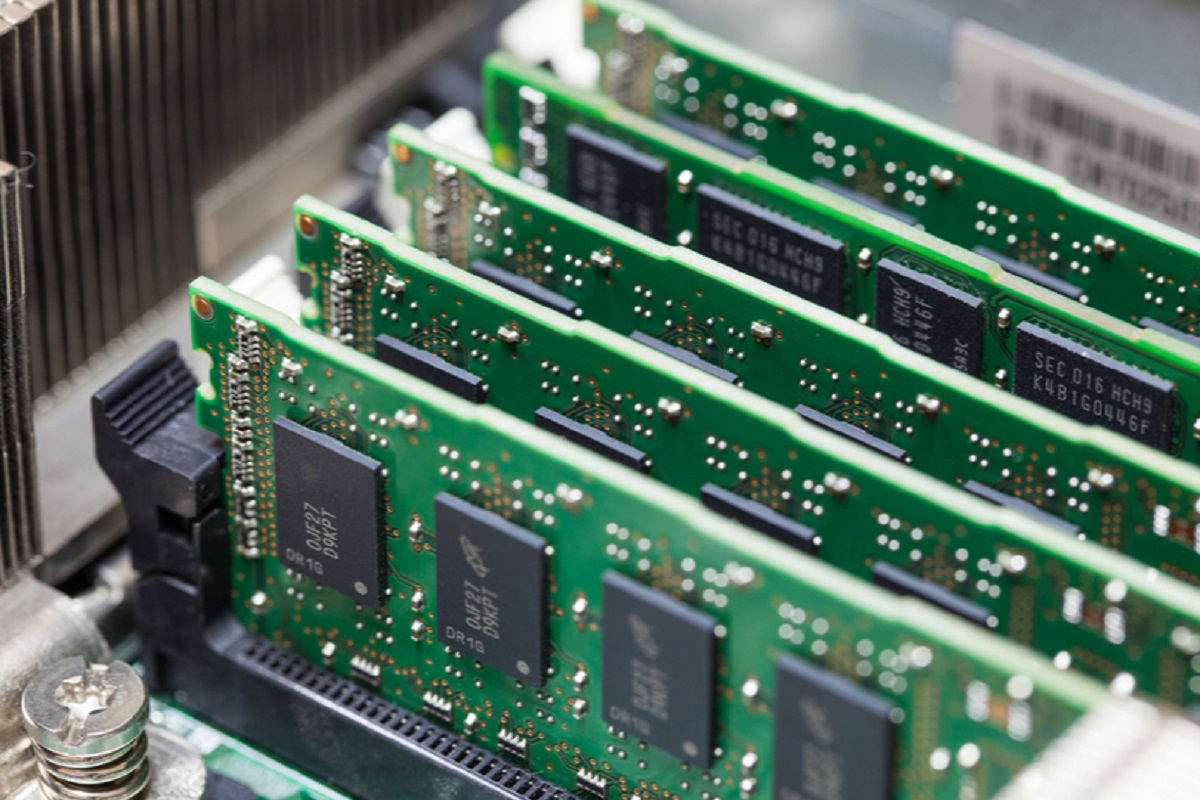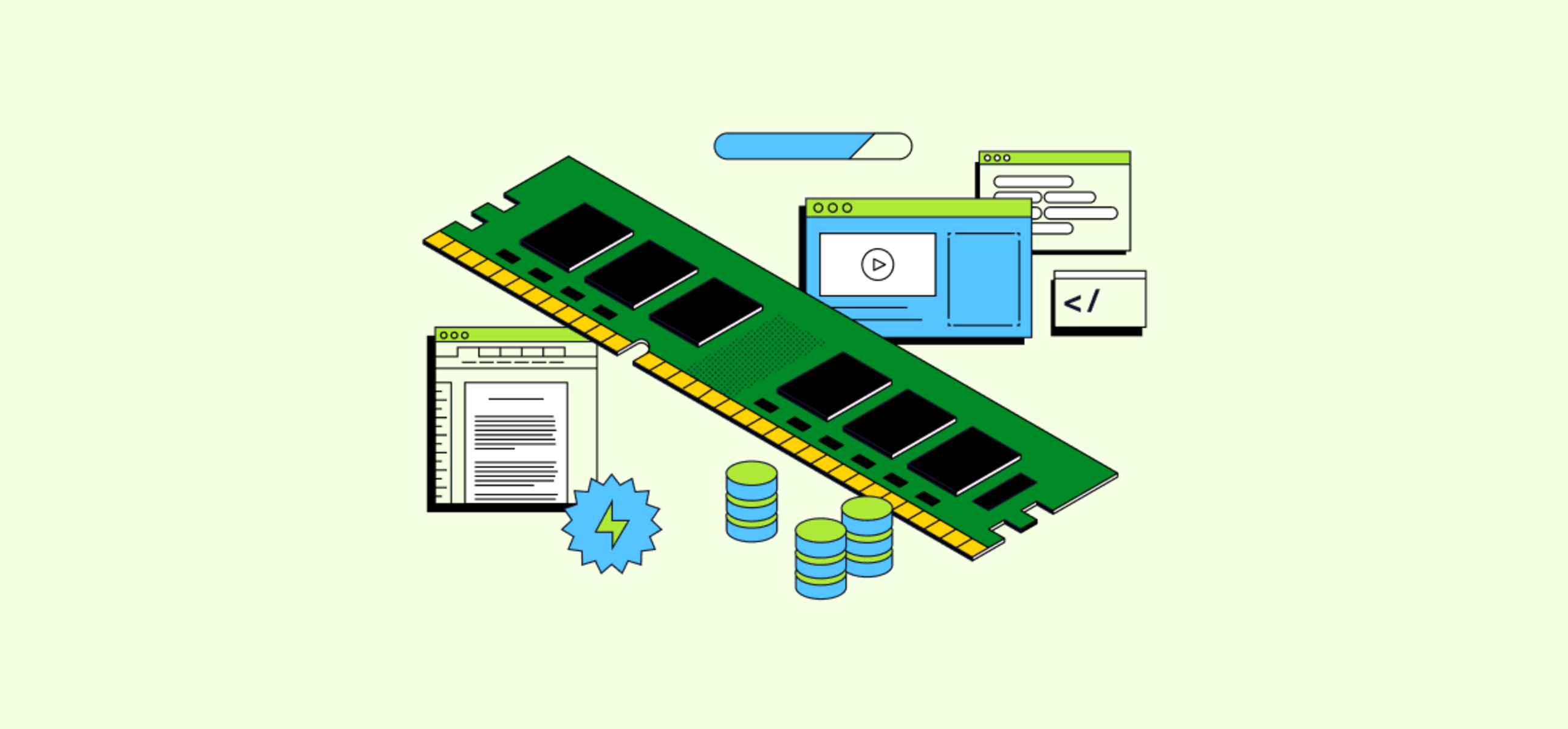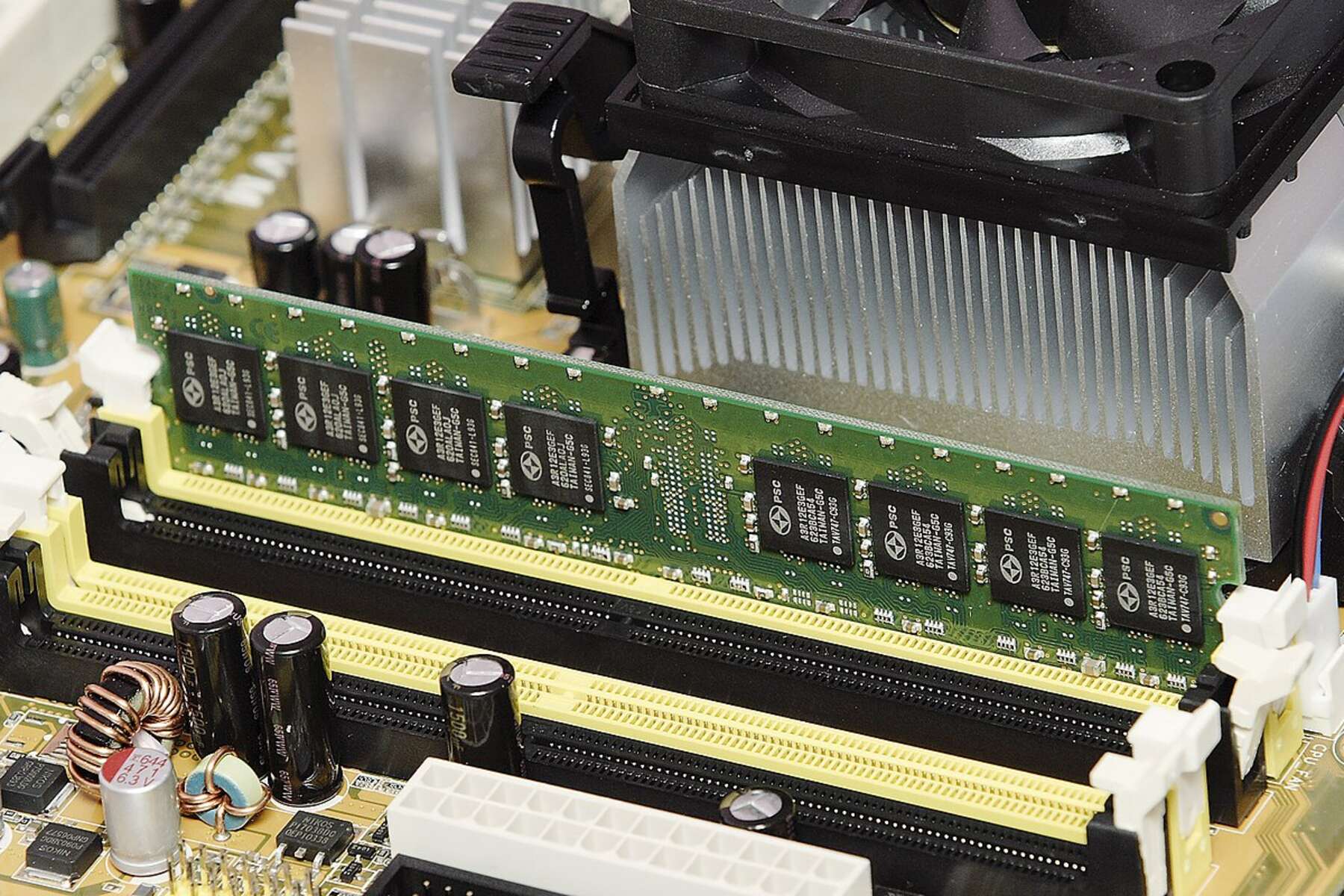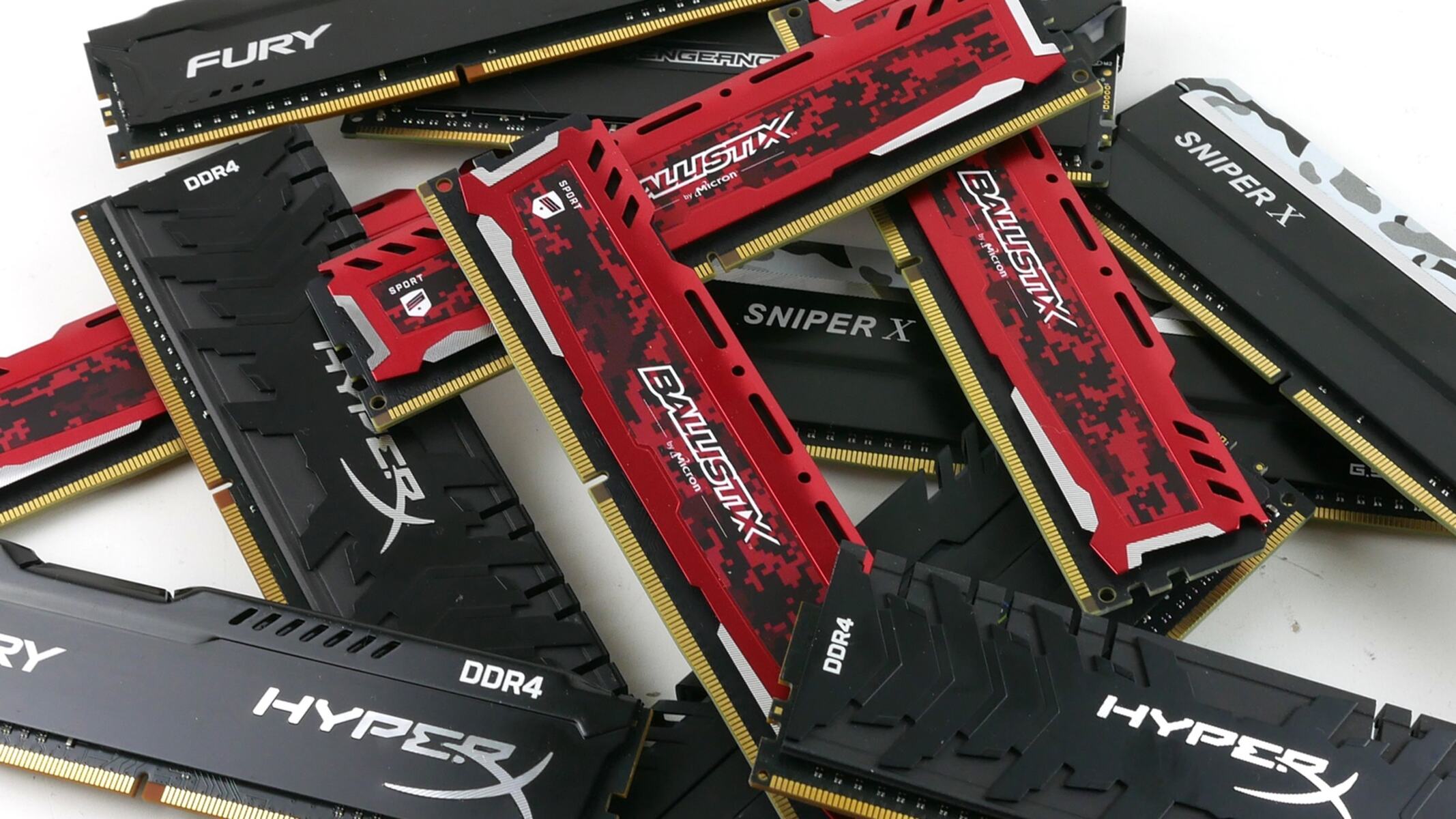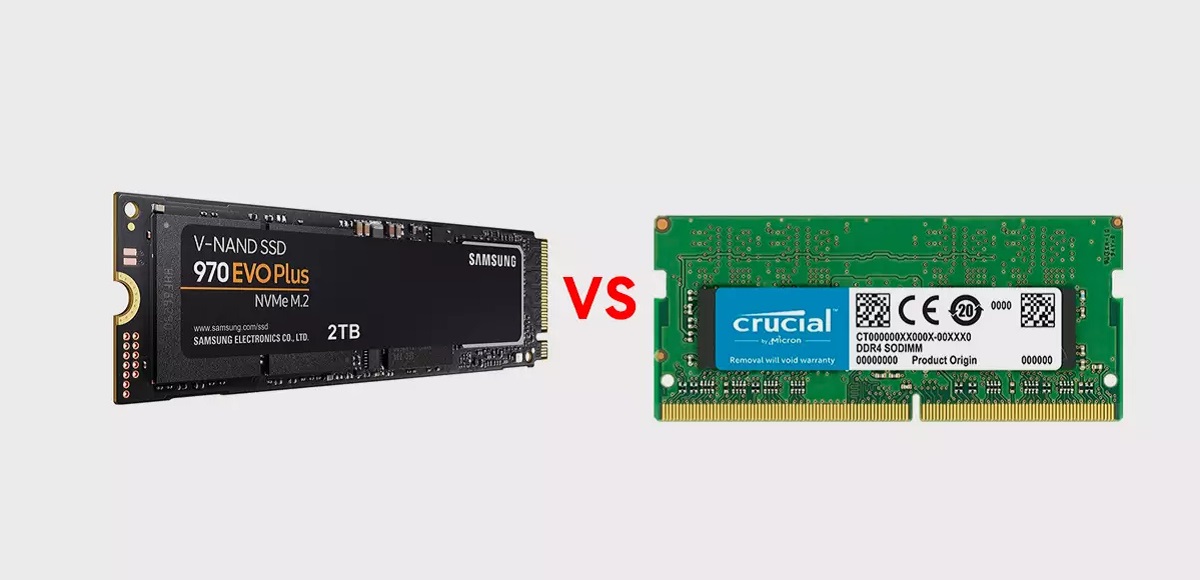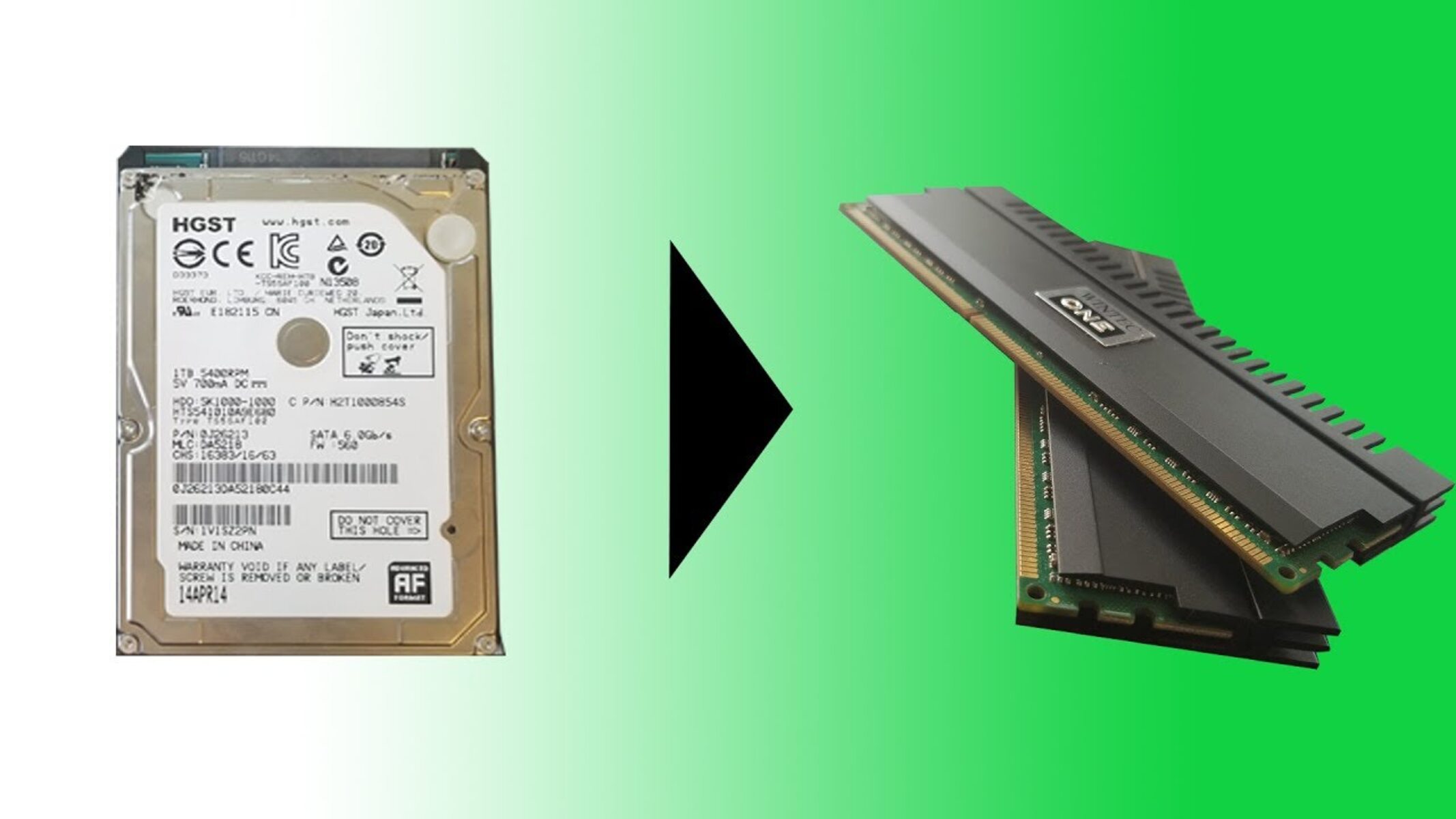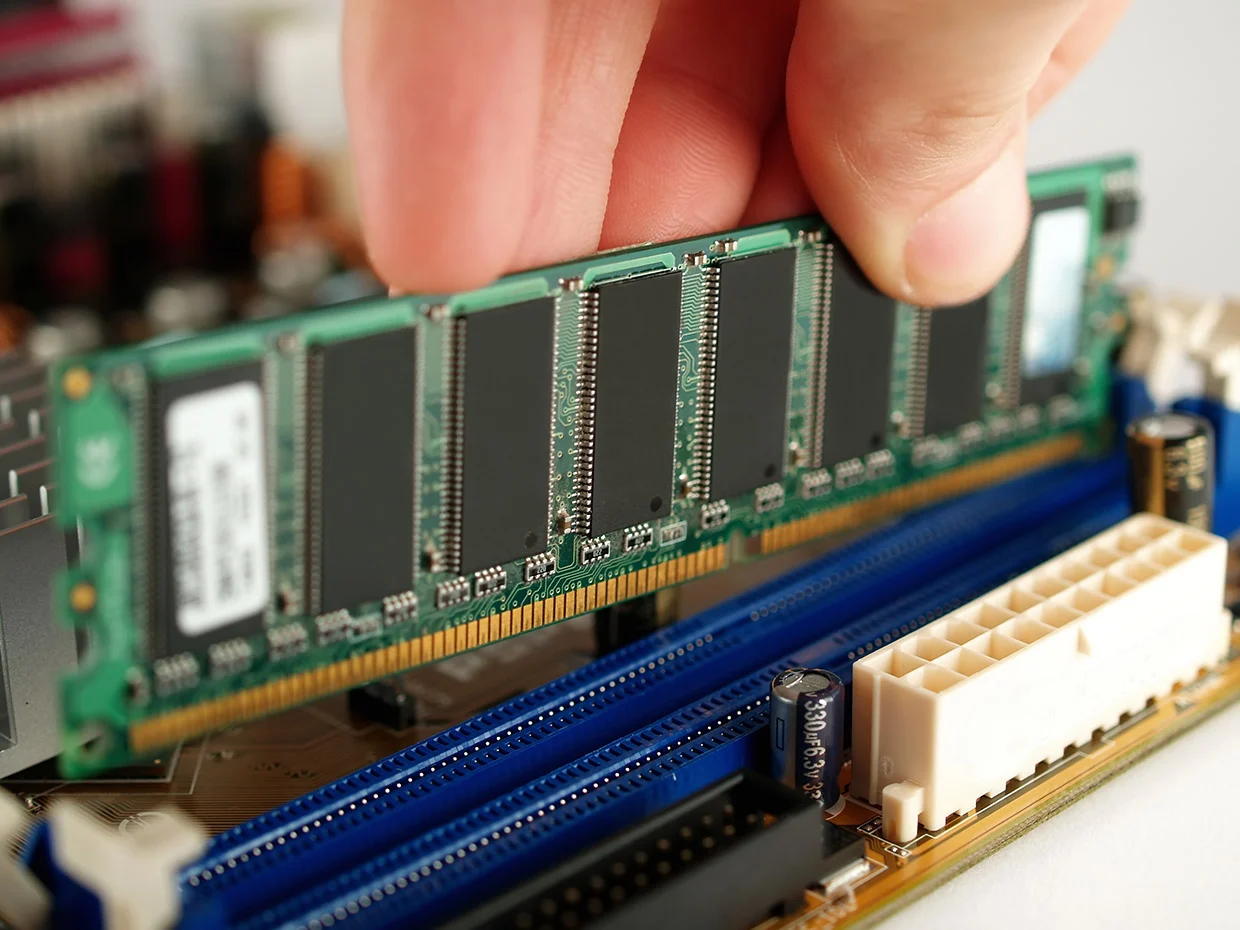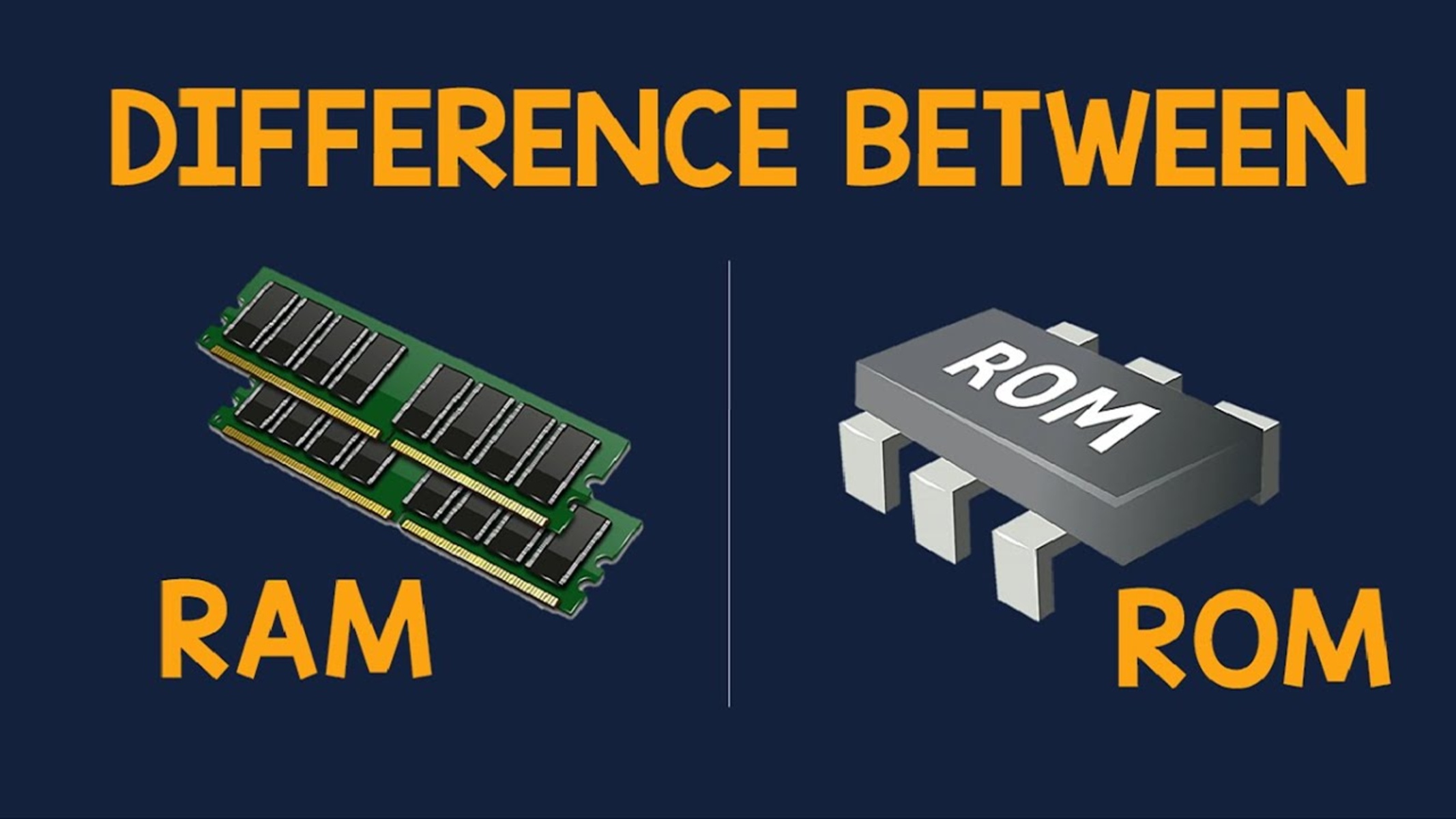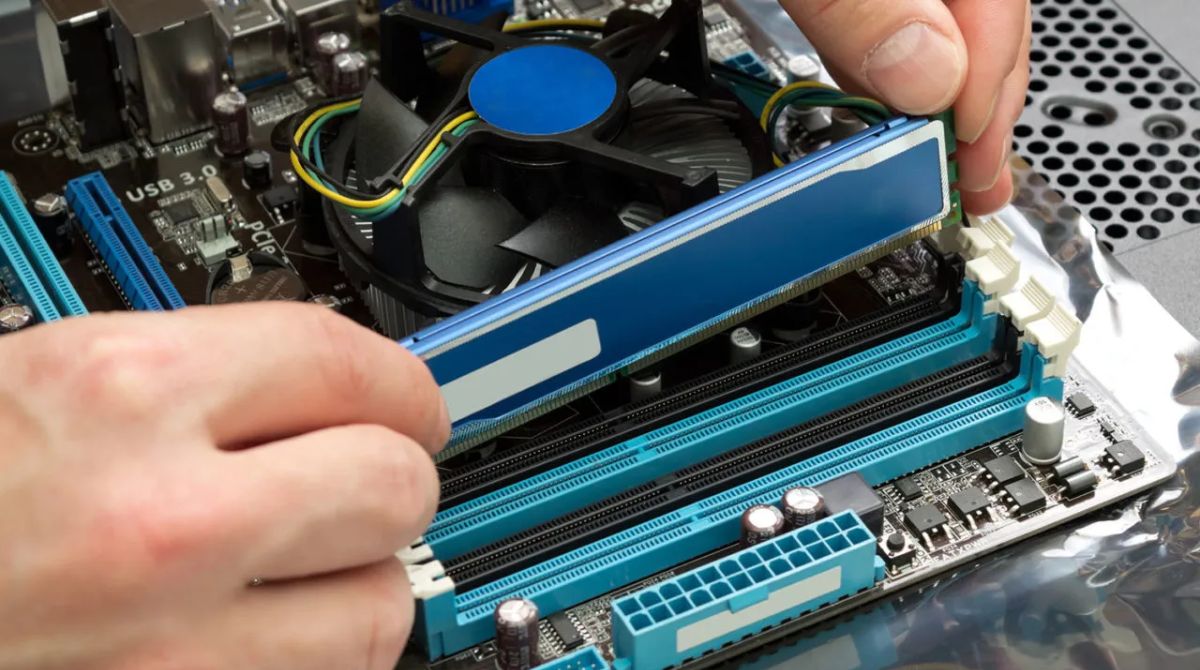Introduction
Welcome to the world of computer memory! When we talk about memory, we often hear the terms “volatile” and “non-volatile” being thrown around. But what do these terms actually mean? In this article, we will explore the concept of volatile memory, specifically focusing on why Random Access Memory (RAM) is considered to be volatile memory.
Before we dive into the details, let’s have a brief overview of what RAM actually is. RAM is a type of computer memory that is used to store data and instructions that are actively being processed by the Central Processing Unit (CPU). It serves as a temporary storage location for the operating system and applications running on your computer. Whenever you open an application, launch a new tab in your web browser, or even just turn on your computer, data is loaded into the RAM for quick access and processing.
Now, you may wonder, what exactly is the difference between volatile and non-volatile memory? Volatile memory refers to a type of memory that requires a continuous power supply to retain its stored data. As soon as the power is cut off or the system is shut down, the data stored in volatile memory is lost. On the other hand, non-volatile memory retains its data even when there is no power supply. This means that non-volatile memory can retain data even after the system is powered off and be accessed at a later time.
RAM, as mentioned earlier, falls into the category of volatile memory. This means that any data stored in RAM is lost when the power supply is interrupted or when the system is shut down. So why is RAM designed to be volatile? There are historical reasons behind this design choice that have influenced the way computer systems are structured.
In the early days of computing, when memory technologies were still evolving, volatile memory was a more practical and cost-effective choice. Non-volatile memory technologies, such as hard disk drives and solid-state drives, were either not available or too expensive at the time. Volatile memory, with its ability to quickly read and write data, provided a faster and more efficient solution for the limited computational power available back then.
What is RAM?
Random Access Memory (RAM) is a fundamental component of any computer system. It is a type of volatile memory that allows the CPU to quickly access and retrieve data that is actively being processed. RAM serves as a temporary storage location for the operating system, programs, and data that are currently being used by the computer.
RAM is made up of small electronic circuits called memory cells, each of which can store a single bit of data, either a 0 or a 1. These memory cells are organized into a grid, where each cell is identified by a unique address. The size of the memory grid determines the amount of RAM a system has, usually measured in gigabytes (GB) or terabytes (TB).
One of the key features of RAM is its random access capability. This means that the CPU can directly access any memory cell within the RAM module, regardless of its physical location. Unlike other storage devices, such as hard disk drives or solid-state drives, which require sequential access, RAM allows for near-instantaneous access to any stored data. This attribute makes RAM ideal for storing data that needs to be accessed and modified frequently, such as files, applications, and program instructions.
Another important characteristic of RAM is its speed. RAM is significantly faster than non-volatile memory technologies like hard disk drives or solid-state drives. While accessing data from a storage drive involves mechanical movements and physical read/write operations, accessing data from RAM involves only electronic signals. This makes RAM an essential component for improving system performance, allowing for quick data retrieval and efficient program execution.
The capacity of RAM varies depending on the requirements and specifications of the computer system. In modern computers, the amount of RAM installed determines how many programs and tasks can be run simultaneously. More RAM allows for smoother multitasking and better performance, as the system can store more data in the fast-access memory rather than relying on slower storage drives.
It’s important to note that RAM is a volatile storage medium, as mentioned earlier. This means that any data stored in RAM will be lost when the power supply is interrupted or when the system is shut down. To preserve important data, it is crucial to save it to a non-volatile storage medium, such as a hard disk drive or solid-state drive.
The Difference Between Volatile and Non-Volatile Memory
In the world of computer memory, two main types of memory exist: volatile and non-volatile. Understanding the difference between these two types is essential for grasping the concept of volatile memory, specifically RAM.
Volatile memory, as the name suggests, is a type of memory that relies on a continuous power supply to retain its stored data. When the power is cut off or the system is shut down, any data stored in volatile memory is lost. This includes RAM, which is a widely used example of volatile memory. Volatile memory is designed to provide fast and efficient access to data, but its contents are temporary and do not persist beyond the current session.
Non-volatile memory, on the other hand, retains its stored data even when there is no power supply. This means that non-volatile memory can preserve data even after the system is powered off, allowing it to be accessed at a later time. Examples of non-volatile memory include hard disk drives (HDDs), solid-state drives (SSDs), and flash memory. These types of memory are commonly used for long-term data storage, where the stored data needs to be accessible across multiple sessions or after system restarts.
The main difference between volatile and non-volatile memory lies in their data retention capabilities. Volatile memory, such as RAM, provides quick and temporary storage for data that is actively being used or processed by the system. It allows for rapid read and write operations, making it ideal for tasks that require fast access to data, such as running applications or executing instructions.
Non-volatile memory, on the other hand, is designed for long-term data storage. It retains data even when the power is turned off, making it suitable for storing files, programs, and operating systems that need to be accessed across different sessions. Non-volatile memory is typically slower than volatile memory in terms of data access and transfer speed, but it offers the advantage of data persistence.
It’s important to note that the distinction between volatile and non-volatile memory is not exclusive to RAM and storage drives. Other types of memory, such as cache memory, registers, and ROM (Read-Only Memory), also fall into the categories of volatile and non-volatile memory. Each type serves a specific purpose in the overall functioning of a computer system, contributing to its speed, efficiency, and data storage capabilities.
Why is RAM Considered Volatile Memory?
RAM, or Random Access Memory, is considered to be volatile memory due to its design and purpose within a computer system. It is important to understand the reasons behind this classification and how it impacts the storage and retrieval of data.
The primary reason why RAM is considered volatile memory is its dependency on a continuous power supply. RAM requires electricity to maintain the stored data in its memory cells. Once the power supply is interrupted or the system is shut down, the data stored in RAM is immediately lost. This means that any unsaved work, open applications, or temporary files stored in RAM will disappear.
The volatility of RAM is a deliberate design choice influenced by various factors. One of the key factors is the need for fast and efficient data access. Volatile memory like RAM allows for quick read and write operations, enabling the CPU to rapidly access and modify data during program execution. The absence of physical read/write operations, characteristic of non-volatile memory like hard disk drives, contributes to the high speed of RAM.
Furthermore, the volatility of RAM allows for immediate release of memory space once it is no longer required. When an application or process is terminated or when data is no longer needed, RAM can quickly free up the memory, making it available for other programs or tasks. This dynamic allocation and deallocation of memory ensure optimal system performance and efficient utilization of resources.
Another reason for considering RAM as volatile memory is the cost-effectiveness and practicality of this type of memory. In the early days of computing, when memory technologies were still evolving, volatile memory was more feasible and affordable compared to non-volatile memory options. The focus was on speed and accessibility, which volatile memory like RAM provided.
Although the volatility of RAM can be seen as a disadvantage, it is often mitigated by utilizing non-volatile storage devices alongside RAM. Modern computer systems typically use hard disk drives (HDDs) or solid-state drives (SSDs) as non-volatile storage for long-term data storage. When a computer is shut down, data that needs to be persisted is saved to these non-volatile storage devices.
In summary, the classification of RAM as volatile memory is based on its reliance on a continuous power supply and its ability to provide fast and efficient data access. While the volatility of RAM may lead to data loss when power is interrupted, it also allows for dynamic memory allocation and deallocation, contributing to overall system performance. By combining RAM with non-volatile storage devices, the benefits of both volatile and non-volatile memory can be harnessed to optimize data storage and retrieval in computer systems.
Historical Reasons for Volatility
The historical reasons behind the volatility of RAM can be traced back to the early days of computing when memory technologies were still in their infancy. During this time, the primary focus was on developing memory solutions that could provide fast and efficient data access at a reasonable cost.
In the early days of computing, volatile memory technologies emerged as a more practical and cost-effective choice compared to non-volatile memory options. Non-volatile memory technologies, such as hard disk drives (HDDs) or solid-state drives (SSDs), were either not available or prohibitively expensive at that time. Volatile memory, specifically RAM, offered a viable solution that could meet the needs of the computing industry at an affordable price point.
Furthermore, the limited computational power available in early computer systems necessitated a memory solution that could rapidly read and write data. Volatile memory like RAM offered faster data access compared to non-volatile alternatives. This speed advantage was crucial for optimizing the overall performance of early computer systems, which typically had lower processing capabilities than modern systems.
Another factor contributing to the historical volatility of RAM is the nature of the tasks that computers were originally designed to perform. In the early days, computers were primarily used for processing scientific and mathematical calculations. These tasks typically required frequent and rapid data manipulation, and volatile memory proved to be the most efficient solution for such computing needs.
Over time, as computer systems advanced and non-volatile memory technologies became more viable and cost-effective, the role of volatile memory like RAM evolved. Instead of serving as the primary long-term storage solution, RAM became the temporary workspace for active data processing. The combination of volatile memory for fast data access and non-volatile memory for long-term storage became the industry standard, providing the best of both worlds.
Today, while volatile memory like RAM remains an integral part of computer systems, the volatility is mitigated by regularly saving data to non-volatile storage devices, such as hard drives or solid-state drives. This ensures that important data is preserved even if there is a power interruption or system shutdown. The historical reasons for the volatility of RAM have shaped the evolution of computer memory and continue to play a significant role in the design and performance of modern systems.
How Volatility Affects Data Storage
The volatility of RAM, as a type of volatile memory, has important implications for data storage in a computer system. The temporary nature of RAM means that any data stored in it will be lost once the power supply is interrupted or the system is shut down. This has both advantages and disadvantages when it comes to data storage and management.
One of the key advantages of volatile memory like RAM is its ability to provide quick and efficient data access. RAM allows the CPU to rapidly read and write data, making it ideal for storing and manipulating data that is actively being processed. This speed advantage enables faster program execution, enhances system performance, and enables smooth multitasking.
However, the drawback of volatility is that any data that has not been saved to non-volatile storage will be lost when the power is turned off. This means that any unsaved work or open applications will disappear, and any progress made will have to be redone. It is crucial to save important data to non-volatile storage, such as hard disk drives or solid-state drives, to prevent data loss and ensure data persistence across different sessions or after system restarts.
The concept of volatility also impacts the design of software applications and operating systems. Developers must take into account that data stored in volatile memory may be unpredictable and temporary. To ensure data integrity and minimize the risk of data loss, applications and operating systems often incorporate features such as auto-saving or temporary file storage in non-volatile memory, allowing important data to be preserved even in the event of a power interruption or system shutdown.
In addition, the impact of volatility on data storage is particularly important in scenarios where there is a need for data recovery or continuity. Volatile memory like RAM does not provide long-term data storage, making it unsuitable for critical data that needs to be preserved for extended periods. This is where non-volatile storage solutions, such as solid-state drives or hard disk drives, come into play, offering robust and persistent data storage options.
Overall, the volatility of RAM affects data storage by providing fast and efficient access to actively processed data, but also requiring additional measures for data preservation. By combining the advantages of volatile memory like RAM with non-volatile storage solutions, computer systems can achieve optimal data storage, retrieval, and management, balancing the need for speed, efficiency, and data persistence.
RAM’s Impact on System Performance
Random Access Memory (RAM) plays a crucial role in the overall performance of a computer system. It directly influences the speed, responsiveness, and multitasking capabilities of the system. The amount and quality of RAM installed in a computer can have a significant impact on its performance. Let’s explore how RAM affects system performance in more detail.
One of the key ways RAM impacts system performance is through its ability to provide fast data access. RAM serves as a temporary storage location for data that is actively being processed by the CPU. When programs are executed, data is quickly loaded into RAM, allowing the CPU to access it rapidly. This results in faster program execution times, smoother multitasking, and improved overall system responsiveness.
The size of the RAM also determines how many programs and tasks can be run simultaneously. The more RAM a system has, the more data it can store and process without relying on slower storage devices such as hard drives. This enables efficient multitasking, as the system can keep multiple applications and processes in memory, reducing the need for constant data swapping between RAM and storage drives.
In addition to data access speed, RAM also plays a significant role in system stability. Insufficient RAM can lead to performance issues, such as frequent program freezes or crashes. When the available RAM is fully utilized, the system may start using virtual memory, which involves swapping data between RAM and storage drives. This process, known as paging or swapping, is much slower than accessing data directly from RAM, resulting in decreased system performance.
RAM also impacts the performance of memory-intensive applications. Applications that involve heavy data processing, such as video editing software or complex computational algorithms, require a substantial amount of RAM to function optimally. Insufficient RAM may result in slower processing times, increased latency, and even application failure. By providing ample RAM, the system can handle memory-intensive tasks efficiently, minimizing potential bottlenecks and improving overall performance.
Furthermore, RAM works in tandem with the operating system to optimize system performance. Modern operating systems utilize RAM management techniques, such as caching and preloading commonly used data into RAM, to reduce data access times and enhance overall performance. These techniques leverage the speed of RAM to store and retrieve frequently accessed data, ensuring quick response times and smooth operation of the system and applications.
Upgrading a computer’s RAM is a common method of improving system performance. Adding more RAM to a computer can help alleviate performance issues caused by insufficient memory. With adequate RAM, the system can store and access a larger amount of data in the fast-access memory, reducing the reliance on slower storage drives and improving overall system performance.
In summary, RAM is a critical component that directly impacts the performance of a computer system. Its ability to provide fast data access, support multitasking, and optimize memory-intensive applications contributes to improved system responsiveness, stability, and overall performance. By ensuring sufficient RAM capacity and quality, users can optimize their computer systems for enhanced productivity and efficiency.
Advantages and Disadvantages of Volatile Memory
Volatile memory, such as Random Access Memory (RAM), offers distinct advantages and disadvantages that impact its functionality and role within a computer system. Understanding these pros and cons can help us grasp the benefits and limitations of volatile memory.
One of the major advantages of volatile memory is its high speed and efficiency. RAM allows for fast data access and retrieval, facilitating quick program execution and multitasking capabilities. The absence of physical read/write operations, in comparison to non-volatile storage solutions like hard disk drives, contributes to the rapid transfer of data within the system. This speed advantage is crucial for maintaining system responsiveness and enhancing overall performance.
Another advantage of volatile memory is its dynamic allocation and deallocation of memory space. RAM allows for flexible and efficient utilization of resources by allocating memory to applications and processes as needed. When a task is completed or an application is closed, the memory is quickly released, making it available for other programs. This dynamic memory management ensures optimal utilization of resources and can lead to enhanced system efficiency.
Volatile memory also provides a temporary workspace for data storage. This temporary nature allows for quick data access and manipulation during program execution. As data in volatile memory is not intended to persist beyond the current session, it offers a clean slate for each session, preventing data clutter and potential conflicts. This aspect can be beneficial for security purposes, reducing the risk of sensitive or confidential information being left behind.
However, the volatility of memory also presents some disadvantages. The foremost disadvantage is the risk of data loss. Any data stored in volatile memory, such as RAM, is lost when the power supply is interrupted or the system is shut down. This means that unsaved work, open applications, and temporary files are not retained once the system is turned off. It highlights the importance of regularly saving data to non-volatile storage to prevent data loss and maintain data persistence.
Another drawback of volatile memory is its relatively limited storage capacity compared to non-volatile storage solutions. The amount of RAM available in a system determines the quantity of data that can be stored and accessed at any given time. Insufficient RAM can lead to performance issues, such as system slowdowns or crashes when memory demand exceeds capacity. This limitation necessitates careful consideration of RAM capacity requirements when designing or upgrading a computer system.
Lastly, the cost of volatile memory can be higher than non-volatile storage solutions when considering storage capacity. Volatile memory generally demands higher manufacturing costs per unit of storage compared to non-volatile options like hard disk drives or solid-state drives. This cost disparity can become a factor when considering large-scale storage requirements, such as enterprise-level data centers or storage-intensive applications.
In summary, volatile memory like RAM offers advantages in terms of speed, dynamic memory allocation, and temporary storage capabilities. It facilitates efficient data access and manipulation, contributing to system responsiveness and performance. However, the temporary nature of volatile memory presents disadvantages such as data loss risk and limited storage capacity. Careful consideration of these pros and cons is necessary when utilizing and managing volatile memory in computer systems.
Conclusion
In conclusion, RAM, as a form of volatile memory, serves as a vital component in computer systems, playing a critical role in data storage and system performance. Its volatility, requiring a continuous power supply for data retention, has historical roots and is influenced by the need for fast and efficient data access. While RAM offers advantages such as high-speed data retrieval, dynamic memory allocation, and temporary storage capabilities, it also presents challenges such as the risk of data loss and limited storage capacity.
The distinction between volatile and non-volatile memory is crucial for understanding the different types of data storage and their impact on computer systems. Volatile memory, like RAM, provides quick and temporary storage for actively processed data, enabling fast program execution and multitasking. However, it necessitates the regular saving of important data to non-volatile storage devices to prevent data loss when power is interrupted.
RAM’s impact on system performance is significant. Its ability to provide fast data access, support multitasking, and optimize memory-intensive applications contribute to improved system responsiveness, stability, and overall performance. Upgrading a computer’s RAM capacity can alleviate performance issues caused by insufficient memory, benefiting system operations and enhancing productivity.
Understanding the advantages and disadvantages of volatile memory is crucial when designing, managing, and utilizing computer memory. The speed, efficiency, and temporary nature of volatile memory like RAM offer benefits for real-time data processing but also necessitate careful management and considerations.
In summary, RAM’s volatility plays a central role in its function and impact on computer systems. The combination of volatile and non-volatile memory solutions allows for optimal data storage, retrieval, and management, ensuring efficient system performance and maintaining data integrity. By considering the unique characteristics of volatile memory, organizations and individuals can make informed decisions regarding memory optimization, system upgrades, and data storage strategies.







